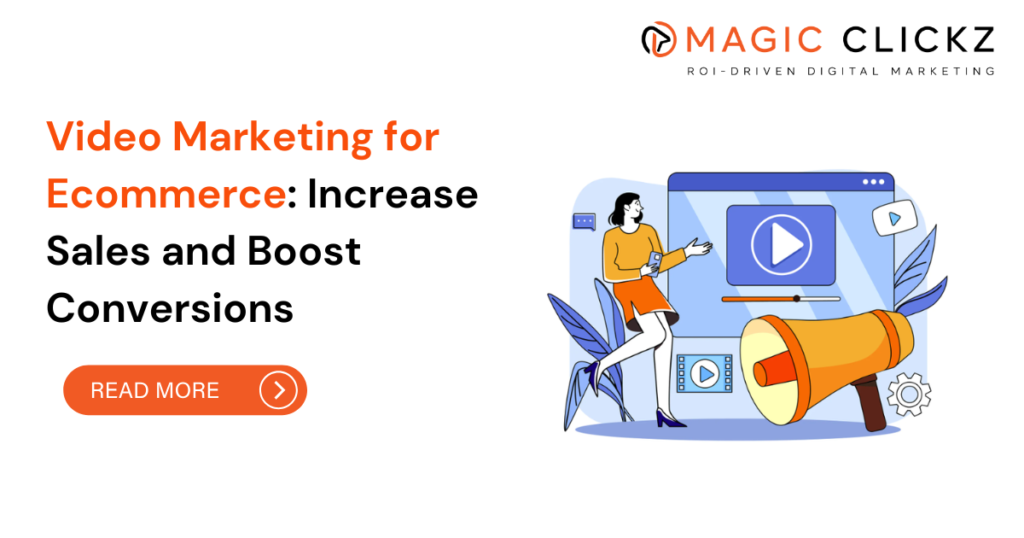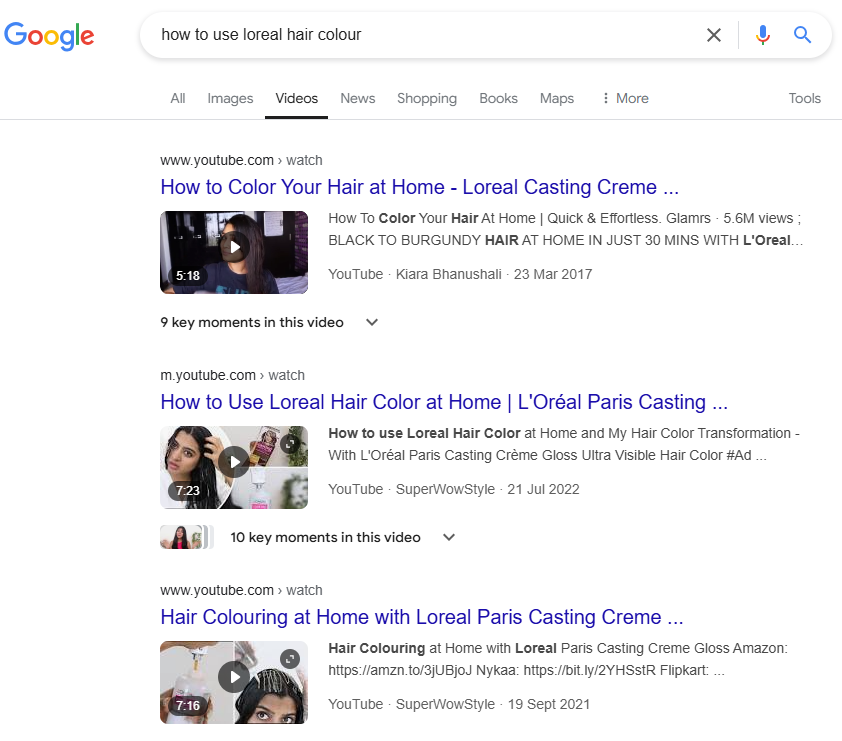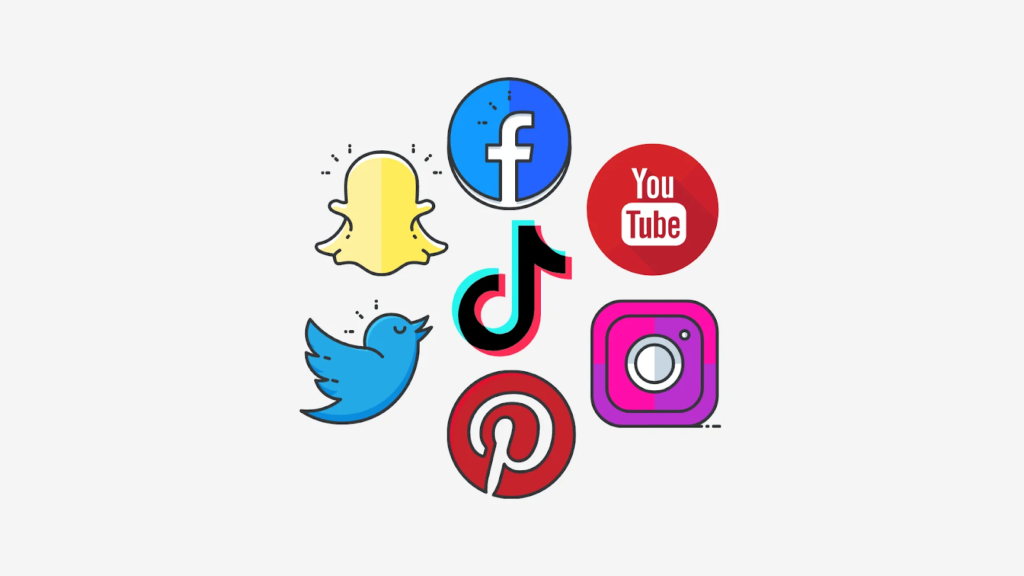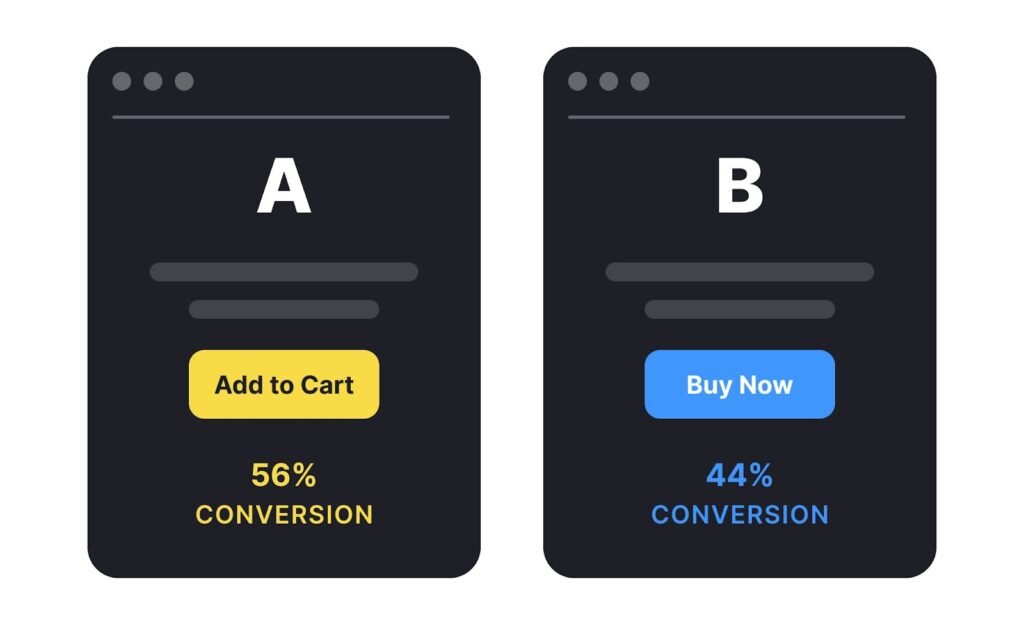
Businesses are constantly seeking innovative ways to attract customers and boost sales. One of the most effective strategies that has emerged in recent years is video marketing for ecommerce. With its ability to engage audiences and convey information quickly, video marketing has proven to be a game-changer.
As ecommerce becomes increasingly competitive, utilising video marketing can give your brand the edge it needs to stand out. From product affirmations to customer testimonials, various types of video content can enhance user experience and drive conversions. Moreover, integrating video marketing services with PPC management services can uplift your reach, ensuring that your videos reach the right audience at the right time. Platforms such as Google Ads offer powerful tools for distributing your video content, also allowing you to target potential customers effectively.
In this blog, we will delve into how video marketing can drive sales and boost conversions for your ecommerce business. We will explore real examples from industry leaders, practical tips for implementation and strategies for measuring success. By the end, you will understand why video marketing is an essential component of a successful ecommerce strategy, especially when combined with effective Google Ads management techniques.
Table of Content
- Why Video Marketing for Ecommerce Matters?
- Video Consumption Trends
- Benefits of Video Marketing for Ecommerce
- Types of Video Content for Ecommerce
- Strategies for Effective Video Marketing for Ecommerce
- Measuring the Success of Video Marketing
Why Video Marketing for Ecommerce Matters?
The impact of video on consumer behaviour is profound. This compelling statistic highlights the effectiveness of video in influencing buying decisions. Video marketing can enhance product visibility, create emotional connections and build trust all critical elements in driving ecommerce sales. For instance, videos allow brands to showcase products in action, demonstrating their features and benefits in ways that static images simply cannot. By incorporating storytelling elements into their video content, brands can connect with viewers on a personal level, fostering brand loyalty and encouraging repeat purchases. Additionally, video marketing provides a platform for businesses to humanise their brands, sharing customer testimonials and success stories that resonate with potential buyers. This transparency builds credibility, as consumers feel more assured about their purchasing decisions when they see real experiences reflected in video content.
Do you know?
Studies show that nearly 80% of consumers are more likely to purchase a product after watching a video about it. This compelling statistic highlights the effectiveness of video in influencing buying decisions.
Video Consumption Trends
As internet speeds have increased and mobile devices have become worldwide, video consumption has skyrocketed. Platforms like YouTube, Instagram and TikTok have revolutionised how content is consumed. According to a report, the video will account for 82% of all consumer internet traffic by 2025. This trend signifies that integrating video into your marketing strategy is no longer optional, it is essential for ecommerce success. This trend signifies that integrating video into your marketing strategy is no longer optional, it is essential for ecommerce success. With the rise of short-form videos, such as those popularised by TikTok, businesses have the opportunity to create engaging, bite-sized content that captures attention quickly. This evolution in video consumption aligns perfectly with the decreasing attention spans of consumers, necessitating a focus on delivering impactful messages within the first few seconds. Furthermore, as consumers continue to spend more time on social media platforms, businesses that effectively leverage video content can enhance their online presence and improve brand visibility, ultimately driving more traffic to their ecommerce sites.
Benefits of Video Marketing for Ecommerce
1. Enhanced Engagement
Video content is more engaging than static images or text, making it ideal for capturing attention. Studies reveal that users retain 95% of a message when it’s delivered via video compared to 10% when read as text. Brands like Samsung have capitalised on this by creating detailed unboxing videos for products like the Galaxy S23 Ultra, offering viewers a closer look at the product’s functionality and features.
These videos not only build excitement but also contribute to a deeper emotional connection, encouraging potential buyers to take the next step.
2. Improved Conversion Rates
Video marketing has a significant impact on conversion rates. A study by Wyzowl found that 74% of users who watched an explainer video about a product subsequently made a purchase. Ecommerce giants like Amazon frequently employ product videos to demonstrate their items, which results in higher engagement and increased sales. Video gives customers the confidence to make informed decisions, leading to fewer abandoned carts and improved conversion rates.
3. Better SEO Rankings
Embedding videos on your website can greatly enhance SEO efforts. Google and other search engines consider the time spent on a page as an indicator of relevance. Video content, by nature, increases time spent on the page, reducing bounce rates and improving the site’s overall SEO. Additionally, you can add this to your Seo trends for 2025. For example, Shopify uses tutorial and product demonstration videos on service pages, which not only enriches user experience but also boosts visibility in search results. Also, optimised videos can appear in search results, driving more organic traffic to ecommerce sites.
4. Building Brand Trust and Credibility
Building trust is crucial in ecommerce, where customers can’t physically inspect products. Video marketing allows brands to showcase products authentically, helping to establish credibility. Lenskart, an eyewear brand, uses videos to tell their story and reinforce their commitment to quality. Through customer testimonials and behind-the-scenes footage, they effectively build trust, enabling buyers to feel confident about their purchases.
Types of Video Content for Ecommerce
1. Product Demonstrations
Product demonstration videos show how a product works, highlighting its features and benefits. These videos can effectively address potential customer objections and clarify how a product solves a problem. Brands such as Apple, excel in this area, often releasing high-quality product videos that showcase their latest devices in action.
2. Explainer Videos
Explainer videos simplify complex concepts, making them easier for consumers to understand. These videos are particularly beneficial for products that require an explanation of their functionality. Amazon, for instance, utilised a simple explainer video that significantly increased their conversion rates by explaining more about the product.
3. Customer Testimonials
Customer testimonials build trust and provide social proof. Video testimonials allow satisfied customers to share their experiences, which can be more persuasive than written reviews. Firstcry, an ecommerce store for babies, features video testimonials from their community, showcasing real users who love their products and creating a sense of belonging.
4. How-To Guides
How-to videos provide valuable information and position your brand as an authority in your niche. For ecommerce businesses, creating how-to content related to your products can attract viewers and drive conversions. For example, L’Oreal produces makeup tutorials featuring their products, encouraging viewers to purchase items used in the videos.

5. Live Streaming
Live streaming has gained popularity, allowing brands to engage with audiences in real-time. This format creates a sense of urgency and authenticity. Amazon has embraced live shopping events, where influencers showcase products and interact with viewers, leading to instant purchases and increased engagement.
Strategies for Effective Video Marketing for Ecommerce
1. Optimise for SEO
Optimising your videos for search engines is essential to ensure that they reach the widest possible audience. Here’s how to effectively optimise your video content:
- Keyword Research: Before creating your video, conduct thorough keyword research to identify the terms and phrases your target audience is searching for. Tools like Google Keyword Planner, SEMrush or Ahrefs can help identify high-volume keywords related to your products and services.
- Video Titles and Descriptions: Include primary keywords in your video titles and descriptions. For example, if your ecommerce business specialises in skincare, a video titled “How to Choose the Best Skincare Products for Your Skin Type” is more likely to rank in search results.
- Tags and Categories: Use relevant tags to further categorise your video, helping search engines understand your content. YouTube allows users to add tags, which can help boost visibility.

- Thumbnails: Create eye-catching thumbnails that attract clicks. Thumbnails act as the first impression of your video; an appealing visual can entice viewers to click.
- Transcriptions and Closed Captions: Adding transcriptions or closed captions can improve accessibility and enhance SEO. Search engines can index the text, making it easier for users to find your content.
2. Utilise Social Media
Social media platforms are invaluable for promoting video content, each with unique user demographics and preferences. Here’s how to tailor your video content effectively for various platforms:
- Understand Platform Preferences: Each social media platform has its unique audience and content style. For example:
- Instagram: Short, visually appealing videos work best. Use Instagram Stories and Reels for quick, engaging content.
- Facebook: Longer videos that tell a story or provide value tend to perform well. Consider posting tutorials or behind-the-scenes content.
- TikTok: Short, entertaining videos that align with current trends can go viral quickly. Use popular music and hashtags to enhance visibility.
- YouTube: Focus on informative content that provides in-depth knowledge. How-to videos, product reviews and vlogs are popular formats here.

- Leverage User-Generated Content: Encourage your audience to create and share content featuring your products. Reposting user-generated content can enhance community engagement and build brand loyalty.
3. A/B Testing
A/B testing is crucial for optimising video content for better performance. Here’s how to effectively implement A/B testing:
- Test Different Formats: Experiment with various video formats, such as live videos, animated explainer videos, and testimonials. Determine which format resonates most with your audience.
- Analyse Video Length: Test different video lengths to find the optimal duration for your audience. Shorter videos may work better for platforms like TikTok, while longer, more detailed videos might perform well on YouTube.
- Call-to-Action Variations: A/B test different CTAs to see which one drives the most conversions. For example, try varying phrases like “Shop Now” versus “Learn More” to determine which encourages more clicks.

- Analyse Viewer Behaviour: Use analytics tools to track viewer engagement, drop-off points, and click-through rates. Understanding when viewers lose interest can help refine your content for better retention.
For example, ASOS frequently conducts A/B tests on their video advertisements to identify which styles and messages resonate best with their target demographic, resulting in optimised marketing efforts.
4. Incorporate CTAs
Calls-to-action (CTAs) are critical for guiding viewers toward desired actions. Here’s how to effectively incorporate CTAs into your video content:
- Placement: Position CTAs strategically within your videos. Consider placing them at the beginning for immediate engagement, in the middle to encourage action after presenting valuable content, and at the end as a conclusion.
- Design and Animation: Use visually appealing graphics or animations for CTAs to draw attention. A flashing button or an animated arrow pointing to the link can significantly increase click-through rates.
- Clear and Compelling Language: Use concise and action-oriented language that clearly indicates what you want the viewer to do. For example, “Subscribe to our channel for weekly updates” is straightforward and actionable.
- Linking: Ensure that your CTAs link directly to relevant landing pages. If you’re promoting a product in your video, the CTA should direct viewers to that product page for easy access.
5. Leverage PPC Advertising
Combining video marketing for ecommerce with PPC management services can significantly enhance your reach and ROI. Here are some strategies to effectively leverage PPC for your video content:
- Targeted Advertising: Use Google Ads and social media platforms like Facebook and Instagram to create targeted video ad campaigns. Specify your audience based on demographics, interests and behaviours to ensure your content reaches potential customers.
- Remarketing Campaigns: Set up remarketing campaigns that target users who have previously interacted with your website or videos. Tailor video ads to these users to encourage them to return and complete a purchase.
- Video Ad Formats: Experiment with various video ad formats, such as skippable and non-skippable ads, bumper ads and sponsored content. Testing different formats will help determine which yields the best results for your campaigns.

- Analyse Campaign Performance: Utilise analytics tools to measure the performance of your video ads. Track metrics such as click-through rates, engagement, and conversions to assess the effectiveness of your PPC campaigns.
Brands like Coca-Cola have successfully integrated video marketing into their PPC strategies, resulting in increased brand awareness and sales through targeted advertising campaigns.
Measuring the Success of Video Marketing
1. Track Engagement Metrics
To evaluate the effectiveness of your video marketing efforts, it’s essential to monitor key engagement metrics. Consider the following:
- View Count: This metric indicates the number of times your video has been viewed. A high view count may suggest compelling content or effective promotion.
- Watch Time: Analysing watch time helps you understand how long viewers stay engaged with your content. A longer watch time typically indicates that your video resonates well with your audience.
- Likes, Comments, and Shares: These interactions reflect viewer engagement and can signal the effectiveness of your content. High levels of engagement often lead to increased visibility and organic reach.

- Audience Retention: Monitor where viewers drop off in your video to identify any weaknesses. YouTube Analytics provides detailed insights into audience retention, helping you refine future content.
2. Analyse Conversion Rates
Evaluating conversion rates is crucial to understanding the direct impact of your video marketing on sales. Here’s how to assess this:
- Track Purchases from Video Views: Implement tracking tools to monitor how many purchases are made by viewers who are engaged with your video content. Google Analytics allows you to set up conversion tracking to gauge video effectiveness.
- Compare Before and After Metrics: Analyse conversion rates before and after implementing video marketing strategies. This comparison can help you assess the value of video content in your overall marketing efforts.
3. Use Analytics Tools
Leveraging analytics tools is essential for measuring the performance of your video marketing campaigns. Consider the following tools and metrics:
- Google Analytics: Use this tool to track traffic sources, user behaviour, and conversion rates related to your video content. Setting up goals and conversions will help you measure success effectively.
- YouTube Analytics: If you’re using YouTube, their analytics dashboard provides detailed insights into viewer demographics, engagement and traffic sources. This data can help you refine your content strategy.
- Social Media Insights: Platforms like Facebook and Instagram offer insights into video performance, including engagement metrics and audience demographics. Use this data to tailor your video content for each platform effectively.
Don’t Let These Video Marketing Tips Drain Away!
Start working on the tips and strategies for video marketing for ecommerce. You can maximise your video marketing skills. Take a hard look at your current strategies and if you find yourself making any errors, it’s time to take action!
Here’s How Magic Clickz Can Help You With Video Marketing for Ecommerce Business!
Magic Clickz is the best digital marketing agency in Indore, here to stop your budget from getting wasted on less skilful agencies. With our video marketing services and expert digital marketing services in Indore, we specialise in promotional video marketing services that maximise ROI by using the smartest strategies available. Don’t let valuable dollars go to waste, partner with us and see how we turn videos into professional, powerful and measurable results.

Other Services We Offer at Magic Clickz
- Pay-Per-Click (PPC) Management Services
- Google Ads Management Services
- Social Media Marketing Services
- Facebook Advertising Services
- Instagram Advertising Services
Don’t wait to contact Magic Clickz today and claim your free consultation to start making a difference in your video marketing strategies right away!


